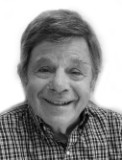HealthManagement, Volume 15 - Issue 3, 2015
Until very recently, radiology was looked upon very favourably by many seniors at American medical schools. As they finalised their choice of residency training, our specialty had acquired an allure based on the exciting technology at our disposal, the relatively high income available to newly minted graduates of fellowship programmes, (because nearly all those completing residency programmes in America have chosen to take an additional year of subspecialty training), the diversity of job opportunities available to them in private and academic practice and the regular schedule of time on and time off, allowing work and play demarcations to be regular and manageable.
In the U.S., radiology, as customarily regarded, fitted within the acronym of R.O.A.D. as a set of medical disciplines with commonalities of advantages. The abbreviation stood for the R as Radiology, O for Ophthalmology, A for Anaesthesiology, and D for Dermatology. All are specialties relatively well compensated at career entry and even better as one gets established. Moreover each offered the prospect of a congenial lifestyle. But now events and attitudes point to bumps in the ROAD as the R seems imperiled.
Now such a preoccupation with impending disinclination towards and disfavour for a thing or idea, if you will, is often a function of both perception and plausibility. And the perception of senior medical students has been informed by certain facts characteristic of how medicine is organised and rewarded in the U.S., and also by how technology is seen to be changing our scope of work. Currently, and for the past few years, CT and MR growth has stopped and even declined in some jurisdictions and among some payers, too, including the federal government. Consequently the growth of private practice receipts has also lessened, and job possibilities for the recently trained have therefore decreased. Hence it is a realistic presentiment that opportunities will be further constricted when those students now considering a radiology career may not find a position six years later when internship, residency, and fellowship are completed. For them radiology may be deemed to be ultimately a dead end.
And for those who train our up-and coming specialists, even today radiology’s place on the road is full of potholes. Of the approximately one thousand positions offered in the match, the national process aligning applicants with training programmes, 137 were not filled initially by either American or foreign students. Only 650 American graduates applied for a residency slot. Thus, in order to complete its complement of first year trainees to begin July 1, 2016, many programmes needed to scramble to find enough suitable candidates willing to come. Few programmes chose to close, but if present trends continue more will have to do so next year. Of the 23 specialties for which positions in residencies were allocated through the National Residency Matching Program (the NRMP), with respect to the percentage of U.S. seniors who ranked our specialty as their only choice, radiology was at the bottom of the list. Just 0.6% were unable to secure a position at the match. And among foreign-educated students so inclined to our specialty 23.1% did not get a position, the lowest percentage among all residencies. Does that mean that even if all training sites fill their classes, quality will decline? Probably. And definitely it will mean that in a few years the characteristics of the practitioners in the specialty will be more cosmopolitan, as an increasing percentage of residents and then fully-fledged radiologists will be foreign-trained, most of them foreign nationals, at least at the time they seek to begin their careers in the U.S.
So now radiology stands alone distinct from its fellow specialties, its erstwhile companions, who for many years travelled together on the same road of applicant esteem. Why the marked change in interest? A partial answer is t hat reimbursement is down, volume is down, and the job market is tough. But I think there is also another answer, one informed as much by developments outside medicine as within it. That is the march of technology, once like a pony’s trot, and therefore manageable, is now like a stallion’s gallop, insistent and uncontrollable.
The impress of algorithmic transformations throughout the economy on the organisation of work and the deployment of personnel seems irresistible in its disruptions. First, many blue collar tasks, with their repetitive exercises, yielded to the efficiencies of the computer. Then some white collar workers became superfluous. Bookkeepers, accountants and now for routine jobs even lawyers have been replaced by programmatic innovations obviating their presence. Above the horizon already is the spectre of transformation of medical recordkeeping, data transfer and most likely image analysis, the latter our bread and butter. In other words radiology is likely to be in the cross hairs. Maybe the effects will be profound, or maybe they will be able to be accommodated, but senior medical students faced with evaluating what they can do for the next forty years, for which they will find enjoyment, intellectual satisfaction and reasonable remuneration, may conclude that radiology’s future seems perilous.
Now the claim, or more realistically the hope, may be expressed that such scenarios are temporary and can be explained by a cyclical model of the future. The narrative could be invoked that as in the past something will happen to make prospects brighten again. But just as possible maybe we are witnessing not a cyclical but a structural change, at once portentous and then conclusively permanent. We must recognise this eventuality and try to deal with it. Our once avid and now reluctant medical students are telling us something we must address. Has our forty years of good fortune (1970-2010) prepared us for further good driving ahead or has it become now merely of little sustained preparation for anything but a trip down memory lane?


